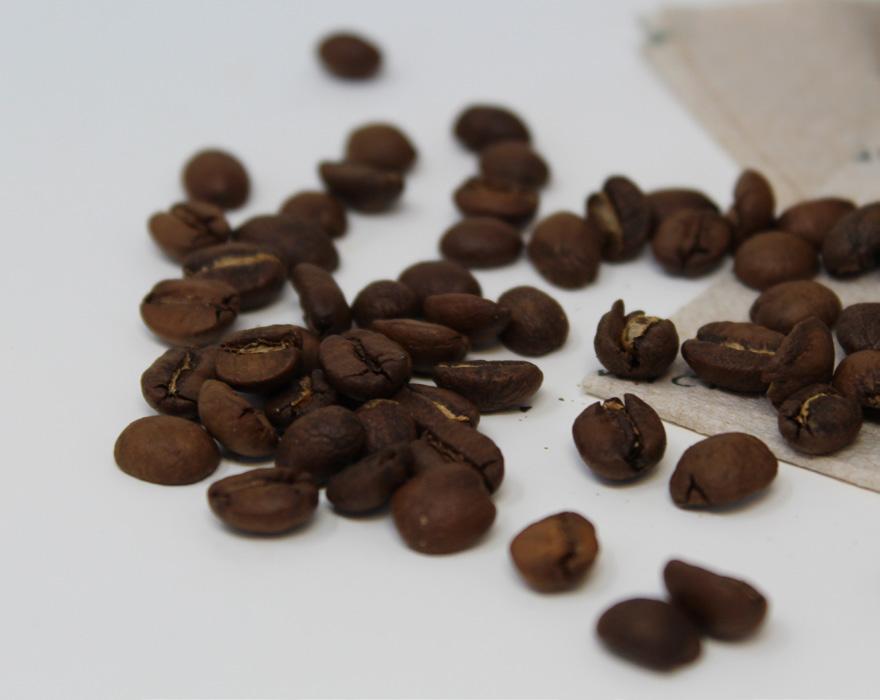
46 minute read
bREAKiNG DOWN tHE buzz
The causes and effects of caffeine dependency
ARTICLE & INFOGRAPHIC BY KATHERINE NGUYEN PHOTO ILLUSTRATIONS BY ALEXANDRA ROZMARIN DESIGN BY JOE SHEM
Advertisement
After countless hours of touring the coast of Australia during his own ninth-grade field trip, Director of Curriculum and Instruction Matt Daugherty finally took a respite in his hotel room. The jet lag from traveling to another country had been “killer.” A coffee maker stood on the counter as part of the hotel’s complimentary service.
“Let’s try this to see if it will help us stay awake for the trip,” his roommate suggested.
One cup of coffee later marked the start of Daugherty’s caffeine journey.
The trend of caffeine consumption has been around since as early as 3000 B.C. and has influenced newer generations to stop at their local Starbucks for a quick caffeinated beverage. However, the constant intake of the stimulant can eventually blur the line that distinguishes a casual enjoyment from a severe addiction.
Dopamine receptors are a reward mechanism that play a role in
A venti iced vanilla latte with oat milk from Starbucks contains 225 mg of caffeine. The pictured beans are the espresso Gamut blend from Chromatic Coffee Co. cognition and movement, according to the National Center for Biotechnology Information (NCBI). Caffeine intake enhances the release of dopamine that stimulates those receptors, and the alertness it brings causes people to consistently consume caffeinated substances to be continually rewarded with that effect.
Verywell Mind—an online resource that provides health and wellness information—describes caffeine addiction as the excessive and harmful consumption of caffeine that negatively affects a person’s physical and cognitive functioning over time. Jeffrey Kehoe, a naturopathic doctor and acupuncturist with a specialty in addiction, finds that building an addiction is not dependent on how often a person consumes caffeine.
“If it starts to interfere with daily activities, work, and starts to present maybe other physical or psychological problems, those are all factors that I would say the medical community looks at more when it’s talking about dependence or abuse as opposed to a specific dose,” Kehoe said.
Introduction to caffeine can start with the family, like in the case of freshman Karen Heng, who began drinking coffee in the morning because of her father’s caffeine habits. She initially added creamers to her coffee and has gradually used less for a stronger taste. Others, such as junior Britney Stout, still use sweetened creamers in their coffee to mask the bitter taste.
“[My family] saves a lot more money brewing our own coffee,” Stout said, “so I’ll just have two and a half cups of whatever coffee we’re brewing, like vanilla with oat milk creamer in it.”
Juggling the workload of classes and extracurriculars, students often consume caffeine for additional energy. This is especially true for Stout, who said she can “work it all off and then crash when [she gets] home.”
Stout’s compulsion for caffeine is driven by her need to start her day with energy and finish schoolwork that she tends to procrastinate on.
“I need more caffeine now than I did when we went to school [in person],” Stout said. “When I kind of just get out of bed and roll into class, I’m so tired that I need some caffeine to get me going.”
The effects of caffeine can persist for around six hours, but an individual can become tolerant to them and require greater doses to obtain the desired effects. Caffeine dependence forms as caffeine blocks adenosine receptors from attaching to their corresponding neurotransmitters, inhibiting drowsiness as a result. Without caffeine to suppress the tiring effects of

adenosine, the body might experience withdrawal symptoms medical supervision depending on a person’s preferences. that range from headaches to lethargy. Daugherty experiences There is also a successful 12-step addiction recovery program withdrawal symptoms such as fatigue or headaches when he does that originated in the 1930s which Kehoe said helps “people not drink coffee in the morning to start his day, with his average rewire their nervous system response.” Recovery does, however, daily consumption being six to eight cups. first require the conscious decision to bring change for oneself and
“I’ve gotten to the right spot where I don’t get all jittery and others. irritable when I drink it so it’s all good,” Daugherty said. “I don’t “There’s something called a harm-reduction approach where attach too much to it.” it’s not necessarily the idea that someone would ever eliminate
As a Catholic, Daugherty once gave up caffeine during the caffeine or alcohol or even drugs completely, but can you reduce season of Lent which occurs before Easter and spans 40 days. it?” Kehoe said. “Can you create a safer environment?” A meaningful sacrifice is expected from followers to reflect and Caffeine is widely accepted as the most consumed stimulant in practice self-discipline, although he admits he will always fall the world, with the National Library of Medicine reporting 85% of back into his caffeine routine in order to fulfill his duties at work. the U.S. population are consistent users.
Conflict arises on the issue of whether caffeine is bad for a “Sometimes we don’t do a very good job here in America of person’s health, with some claiming it poses no risk with limited encouraging people to ask for help or giving them the resources intake and others raising concerns about the long-term health that they need and especially when there’s a stigma attached,” effects. Kehoe said. “So the biggest thing is to find someone you trust
“You’ve got to be careful that you’re not jumping into something and let them know that you’re struggling, whether it’s caffeine or that your body’s not developed enough for yet,” Daugherty said. something else.” “You don’t want to develop a dependency that early on.”
The American Academy of Pediatrics (AAP) recommends at most 100 mg of caffeine daily for children ages 12 to 18 and no intake for children under that age UPA'S CAFFEINE HABITS range.
Caffeine may disrupt the formation of key connections in the brain during # o f s u r v e y r e s p o n d e n t s b y g r a d e / p o s i t i o n adolescence according to Verywell Health. Other critical effects of excessive caffeine consumption include sleep 34 41 39 33 34 36 20 deprivation, calcium deficiency or 7 T H 8 T H 9 T H 1 0 T H 1 1 T H 1 2 T H T E A C H E R / underlying heart issues. A D M I N
New research suggests benefits are emerging for caffeine users as ongoing Framingham and Cardiovascular Health h o w d o y o u studies demonstrated the reduction of c o n s u m e heart failure by 5% to 12% per cup of coffee per day. Other positive effects c a f f e i n e ? COFFEE 59.9% TEA 52.7% SODA 47.7% SUPPLEMEN 5.1% TS OTHE 4% R include improved moods and reduced risk of Alzheimer’s, Parkinson’s and stroke. w h e n d o y o u c o n s u m e # of survey
“I’m hoping after junior year and c a f f e i n e ? respondents by during the summer I can find other ways to stay awake and motivate myself 1 EVENING gender identity without caffeine,” Stout said. “I’m just hoping to find healthier alternatives.” FEMALE: 144
Decaffeinated alternatives can 4 AFTERNOON continue to satisfy the flavor and warmth MALE: 85 that a beverage might serve for an individual while reducing their caffeine 21 MORNING GENDER NONintake. CONFORMING: 5 “You get into a habit, and I’m just looking for something to fill in 36 THROU THE G D H A O Y UT N/A: 3 that habit,” Daugherty said. “If I like sipping on a warm liquid while I’m 0 10 20 30 40 working, that helps me multitask, I can add [decaffeinated] tea instead and that fulfills that niche.” Options for recovery from caffeine 43.5%43.5% of 62 responses classify themselves as addicted to caffeine addiction can include support groups or

the irony of
ILLUSTRATIONS BY AKSHARA KOLLU DESIGN BY THRISHA PRAVEEN
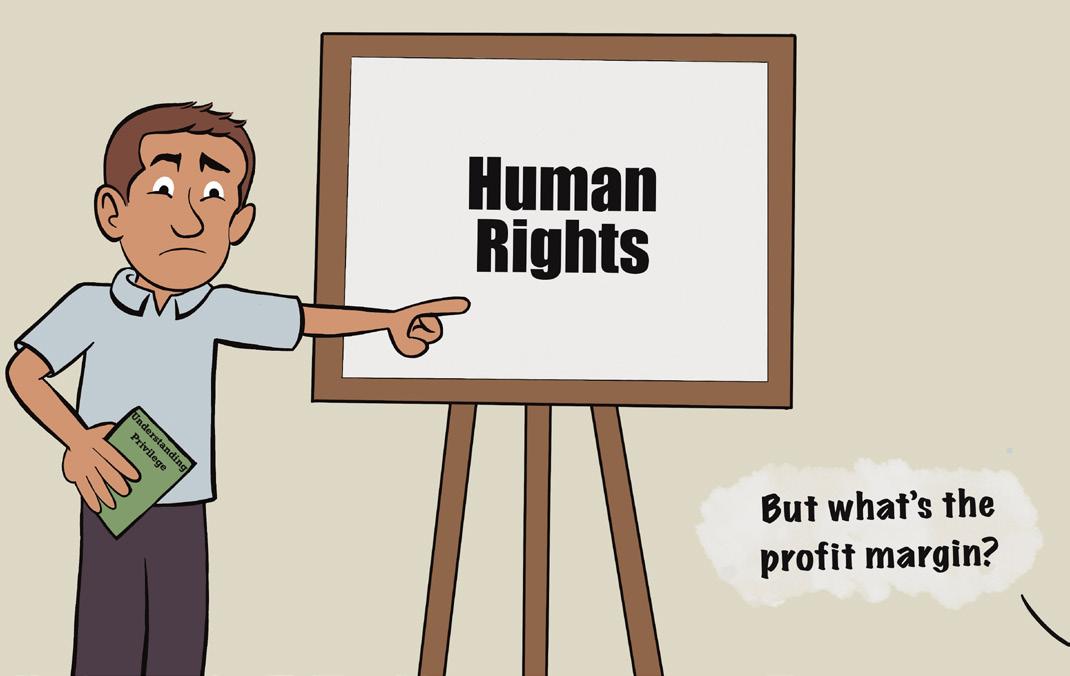
america A Patriot
Cost-Benefit Analysis

Blindspot
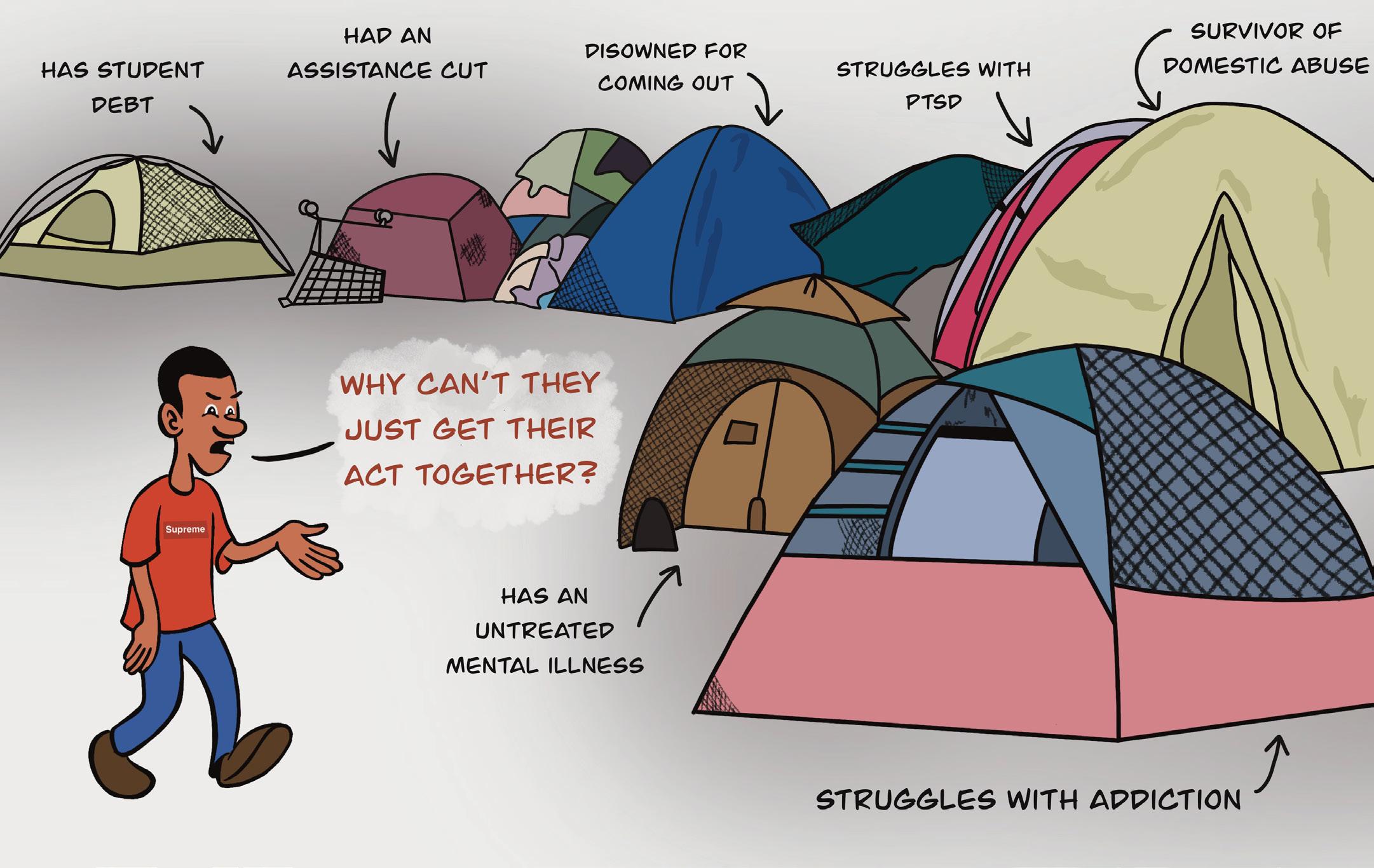
Why Minority-Owned Businesses Deserve More Funding
ARTICLE & PHOTO BY NAYELI BREWSTER • DESIGN BY JANESSA ULUG inority-owned businesses have been forced to close or
Madapt to the circumstances of the pandemic. For minorities, the struggle is nothing new.
Usually, businesses are provided with government 27 million small businesses in the United States generate about 50% of the country’s gross domestic product. Victor Diaz, my uncle, owns an Oakland shoe store, which he started in early 2020. funding, grants and Paycheck Protection Program (PPP) loans— loan programs established by the federal government through the Coronavirus Aid, Relief and Economic Security Act (CARES Act) to help businesses pay their employees and keep the businesses afloat in the likelihood of financial or natural disasters.
Minority-owned businesses are the last to receive the funds they need, not because they do not qualify, but because the federal government has given large amounts of money in PPP loans to those who should be last in line, such as Shake Shack and Ruth’s Chris Steak House.
Shake Shack, with a net income of $15.18 million, and Ruth’s Chris Steak House, which boasts a net income of $42.21 million, according to statista.com, are restaurant chains in no need of any money, especially since there are smaller businesses who are in jeopardy of closing permanently.
According to the Consumer News and Business Channel, a television businesses news channel, the U.S. Treasury Department privately encouraged banks to prioritize existing clients when implementing the federal government’s Paycheck Protection Program. This caused limitations for minority- and women-owned businesses since PPP loans were limited to existing customers only. This occurred under former President Donald Trump’s administration and was discovered by a Democrat-led select subcommittee. The Trump Administration did not consider minority-owned businesses while granting PPP loans, and the broken prioritization process has made businesses suffer.
Monika Diaz, my mother and owner of Phatefx—an Afro-Latino-owned hair salon in San Jose—has been in business for more than 24 years. She has only received one U.S. Small Business Administration grant of $5,000. Diaz has had to rely on customer donations and side jobs to keep her business running and her six employees employed, in addition to providing for me.
“Even though the landlord has gotten PPP loan assistance, we still never received any breaks on the rent,” she said. “It’s been difficult to stay open, but I have to keep going because it’s not just me involved. I have a daughter, and I have employees that depend on their jobs to provide for their families.”
According to a December 2020 article in the Washington Post, “more than half of the money from the Treasury Department’s Coronavirus emergency fund for small businesses went to just 5% of the intended recipients.”
Although some small businesses received money, “about 600 mostly larger companies that [supply between 50-500 jobs], including dozens of national chains, received the maximum amount allowed under the program of $10 million,” the Washington Post revealed.
Small businesses continue to be wrongfully overlooked, even while the U.S. Small Business Administration reports that nearly “It’s hard to be part of a community that is constantly being exploited, overlooked and not considered just because of our skin color,” he said in reference to the Latino community. “Especially with our last president, we knew that there wasn’t going to be any help or resources for us for a very long time.” Minorities value their businesses just as much as white business owners do, and unfortunately for people of color, thriving in America is a constant uphill battle. As Tupac Shakur wrote, “The American Dream wasn’t for me / Cause Lady Liberty’s a hypocrite she lied to me / Promised me freedom, education, equality / Never gave me nothing but slavery / But now look at how dangerous you made me / Callin’ me a mad man because I’m strong and bold.” Although Shakur’s words are from 18 years ago, they still resonate with today’s climate. Despite not always having the resources and support that they need to survive and thrive, minority-owned businesses always come through to help each other. Minorities do not have as easy access to money and resources to support themselves and their families in a disaster like this pandemic; they have churches, other businesses, fundraisers and an overall sense of a loving community to aid them. Jasmine Butler is a worship minister at Emmanuel Baptist Church, a predominantly Black church in San Jose. She said Emmanuel Baptist has contributed to the community for the 55 years it has been in service, from efforts like food drives, toy drives and fundraisers for the homeless. Since the beginning of the pandemic, the church has gone above and beyond, she said. “Since October [2020], our church has become a testing site for COVID-19,” Butler said. “Now that vaccinations have started, we have become a vaccination site. Our site has become one of the biggest sites in the community, testing about 20,000 people so far.” Minorities understand that with the help of one another, financial obstacles can be overcome. “As Black people, we’ve always been given the short end of the stick, but still we rise,” Butler said. “It’s amazing to see how we continue to thrive with the help of one another.” But the burden of keeping small businesses afloat should not fall squarely on the shoulders of minorities. Minority-owned businesses have always been neglected, and it is time for them to get the recognition that they deserve. Although they do have the support of their community, imagine the opportunities that could arise for people of color with increased support from the federal government. In the future, the federal government should target historically underserved businesses with special loans. And for the wellbeing of minorities, everyone in the community—no matter their race—should consciously make a commitment to support minority-owned businesses.
God Loves ...Most?
How LGBTQ+ experiences are impacted by religion
ARTICLE & ILLUSTRATION BY VIDYA ACHAR • DESIGN BY AKHILA AYYADEVARA
Editor’s Note: Taylor Renwick’s pronouns are “ve/ver/vis,” a gender neutral pronoun created by the LGBTQ+ community as an alternative to “they/them.”
Terms to Know
Heterosexual: Attraction to someone of the opposite gender
Cisgender: Someone whose identity and gender corresponds with their sex assigned at birth
Omnisexual: A person who is sexually, romantically and/or emotionally attracted to people regardless of their sex or gender identity
Queer: Used as an umbrella term referring to anyone who is not straight and not cisgender
Genderqueer: People who have a non-normative or queer gender
Nonbinary: An umbrella term, which encompasses genderqueer people, along with other genders that do not fit into the box of “male” or “female”
Lesbian: A woman who is sexually and/ or emotionally attracted to other women
Transgender: Someone whose identity and gender does not correspond with their sex assigned at birth
Definitions come from OutRight Action International, an organization dedicated to human rights advocacy.
From Pope Francis’ announcement on March 15 barring priests from blessing samesex marriage to His Holiness the Dalai Lama’s statement calling same-sex marriage acceptable and an individual choice, religion can play a vital role in shaping perspectives of the LGBTQ+ community.
In May 2019, Pew Research Center published data indicating 41% of lesbian, gay and bisexual adults identify as athiest, agnostic or “nothing in particular,” compared to 22% of straight adults who identify the same.
Sophomore Taylor Renwick, an atheist, was surrounded by gay loved ones throughout vis childhood, especially vis two male godparents whom ve visited often.
“I wasn’t taught that being gay is weird,” ve said. “It was more like, ‘These are your godparents; let’s go visit them for Christmas.’”
Homosexuality was normalized in the Renwick household, with vis parents recognizing that their child could be queer.
“My parents would sometimes make jokes about me having a crush on my [female] best friend,” Renwick said. “I didn’t have to come out for that because it was normal.”
Because both vis mother and father were not religiously affiliated, Renwick and vis sibling, Riley, a sophomore at UPA, were raised in a non-religious household. Renwick believes this lack of religion contributed to vis parents’ acceptance of same-sex couples. Renwick’s advice for “deeply religious” people when interacting with members of the LGBTQ+ community is to accept them as they are.
“People in the community already have a hard time accepting themselves, so don’t make it any harder for them,” ve said.
Unlike Renwick’s parents, senior Ashley Nguyen, a Buddhist, described her parents’ stance as “don’t ask, don’t tell.”
“Growing up, we never talked about it,” she said. “[The LGBTQ+ community] was kind of a hidden thing.”
RILEY’S STORY
When Renwick’s older sibling, Riley, was in sixth grade, they came out as genderfluid. At the time, Riley went by interchanging pronouns of he/him, she/her and they/them. Coming out was a shock for Renwick’s parents.
“They had to educate themselves on gender,” Renwick said. “They knew how to treat people with a different sexuality, but gender was a whole new concept.”
Nevertheless, Renwick’s parents were accepting and respected Riley’s pronouns. Renwick, on the other hand, was surprised to find the concept of gender-fluidity existed.
“When Riley came out, it was like my epiphany moment,” ve said. “Like, ‘Whoa, there can be more than two genders.’”
One year later, as Riley entered seventh grade, they came out again to their family as non-binary. This led to Renwick realizing gender is a spectrum and a person can experiment with multiple labels before finding what is right for them.
Riley’s coming out encouraged Renwick to come out over quarantine as genderqueer and omnisexual.
“If I went to the same church as my greataunt, I probably would’ve had a much harder time coming out,” Renwick said, sharing that people can hold religion in high esteem, but should not use it as an excuse to discriminate against members of the LGBTQ+ community.
“Religion is definitely not a reason to shun people,” Renwick said. “I don’t know why a religion would teach you to dislike a whole group of people.”
Junior Zaid Syed, a Sunni Muslim, does not agree with same-sex relationships, but believes that Islam does not prohibit an individual from having feelings for the same sex.
“[Islam] does not punish you based on how you feel,” Syed said. “It punishes you based on what you do. So if you feel a certain way, that’s perfectly alright. But if you act upon [those desires], that’s a completely different thing.”
Senior Evelyn Soto, who identifies as Christian, believes homosexuality is a sin in the Bible. She grew up attending Cathedral of Faith, but switched to the Spanish-language church Alcance Victoria (Victory Outreach) about a year ago.
“I personally don’t have anything against the LGBTQ community and I support it even though I’m not supposed to,” Soto said. “Because the Word of God once again says that a man and man shouldn’t date because God created a man and a woman to be together, not men and men or women and women.”
Senior Isabella Bronner, who also considers herself Christian, believes God created every individual for a reason. Just as God created
many people to be straight, he also created other people to be gay, Bronner said.
“It’s so weird to say you don’t accept certain people, when Jesus’ main message was love,” Bronner said. “Jesus accepted everyone. He loved everyone, especially the outcasts of society. In a way, people in the LGBTQ+ community are ostracized by society. They’re outcasts, but it’s our job to love them.”
Though she does believe that suppressing same-sex attraction is better than living openly as LGBTQ+, Soto does not believe in judging or commenting about other people’s sins.
“I know some people are afraid because they feel Christians will judge them, but we won’t really, depending on the [LGBTQ+] person,” Soto said, meaning LGBTQ+ individuals should be judged by their other sins, as would any other person. “Because I’ve also heard stories about how some Christian women or men would disown their child or teenagers who are in the LGBTQ.”
She also disagrees with parents who disown their LGBTQ+ children.
“Their kids are their responsibility no matter who they become,” Soto said.
According to True Colors United, an organization that works to combat LGBTQ homelessness at the local, state and federal levels, LGBTQ youth are 120% more likely to experience homelessness than all other youth. The Trevor Project reported that LGBTQ youth represent as much as 40% of homeless youth, but only account for an estimated 7 to 9% of the youth population ages 8 to 18.
Because of prejudice toward LGBTQ+ youth, Bronner, Soto and Syed are vocal about preventing violence or harassment toward the community.
“Our religion does not say to hate homosexuals,” Syed said. “The same way we wouldn’t hate an alcoholic. We hate the sin, but not the sinner.” Syed cites Chapter 109 Verse 6 in the Quran, which translates to “To you your belief and to From left to right: A Christian, LGBTQ+ community member and Buddhist stand together, representing unity and acceptance of one another. me mine.” Though he believes homosexuality is “morally and objectively wrong,” Syed does not believe that heterosexual people are superior to gay people and condemns violence against anybody in the LGBTQ+ community.
Soto agrees that “violence is never the answer” and would defend a person in the community from hateful remarks.
“I’ve never had an experience where I needed to stand up,” Soto said, “but if I were in a situation where another Christian was, say, harassing, a person from the LGBTQ community, I would step up, because that’s not right. We’re human.”
Soto, who believes living openly in a non-heterosexual relationship strays from the word of God, said her church will accept people no matter what sexual orientation, but it might try to lead them down a more heteronormative path.
“[Some pastors] won’t look down upon you if you’re gay, but they’ll try and convince you and show you the ways of the Lord,” Soto said. “There’s actually a girl, she’s a youth leader, and before she became a follower of Christ, she was a lesbian. She had a girlfriend and everything. But, she got into Christianity and the people started teaching her about the Word of God and everything and now she’s no longer lesbian.” Though Bronner recognizes some Christians are not accepting of LGBTQ+ individuals, she does not try to change other people’s opinions on the LGBTQ+ community. “I try not to bring up the LGBTQ+ community in my church,” Bronner said. “Like if they’re being homophobic, I kind of tune it out and try to not get angry because I know they’re never going to change their minds no matter what I say.”

A PASTOR’S PERSPECTIVE
The Rev. Caiti Hamilton, a pastor at Open Door United Methodist Church in Richmond, agrees that persuading homophobic people who are not willing to question their beliefs is difficult.
“It’s hard to say that anything I’ve said has really changed anyone’s mind,” Hamilton said.
Hamilton, who is a lesbian, has faced challenges in her leadership role as a queer woman in the middle of a social movement. On a local level, people attending Hamilton’s church are affirming of LGBTQ+ individuals, many of whom are LGBTQ+ themselves. But, as Hamilton explained, the larger consensus of the United Methodist Church is that being LGBTQ+ is considered a sin.
“So me and any LGBTQ people in my church are kind of in this weird in-between where we’re fully accepted here [on the West Coast], but on the global level in the United Methodist Church, we’re in this
huge argument about it,” she said.
Hamilton credits straight allies in her church with helping her achieve her goal of becoming a pastor.
“I had literally dozens of people break the rules for me and my queer colleagues,” she said. “You know, that was great.”
Hamilton feels a significant shift in the way people in her denomination think about LGBTQ+ issues, in part due to more visibility of the community and increased social acceptance.
“I think it’s people coming out, refusing to be in a closet and refusing to accept a lesser status in the church and in life,” she said. “And then, I think it’s allies responding. I think that oftentimes when people change their mind, it’s because someone they love has come out.”
She recognizes, though, that she can rarely change people’s minds if they are not already looking for a way out of that belief system.
“I try to look for why they believe [what they believe] and kind of speak to that,” Hamilton said. “If it’s biblical translations, I can give people resources if they’re open to reading them.”
In her experience, biblical verses have been mistranslated to specifically criticize gay and lesbian people. Hamilton noted that if a person opened up an English Bible in the United States, they would find the word “homosexuality” in it. She uses the example of the New Testament’s book of Romans, which condemns homosexuality in its English translation.
“It doesn’t take long investigating to find out there was no word for homosexuality,” she said. “In Koine Greek, which [is the language] that book was written [in], there just simply was not that word, so it even being translated in any way in the Bible is just wrong.”
To combat the negative depictions of LGBTQ+ people in certain religious texts, Hamilton includes the LGBTQ+ community in sermons she preaches. For example, she refers to God with pronouns they/them, instead of the traditional he/him.
“I have people in my church who use they/them pronouns,” she said. “And we know that God always being referred to as a ‘he’ had some issues. Referring to God as ‘they’ brings in the experience of our genderqueer nonbinary friends and lets them see themselves reflected in their own faith.”
Hamilton knows the importance of representation, so she tries to be as supportive to minority communities as possible.
“I want to be that person I didn’t have growing up to affirm queer people, queer relationships and queer identities,” she said.
Earlier this year, Hamilton prayed over a church member’s top surgery. She explained she wanted to validate that person’s experience.
“I think that’s always the pastor I’ve wanted to be,” Hamilton said. “Just real and [experience] life with people. And for me, that happens to be queer issues.”
Hamilton observed that heteronormative expectations can be harmful in furthering queer rights and recounted the expectations placed on her as a child.
“Growing up as a Christian woman, you are told that you’re supposed to act and look a certain way in life,” Hamilton said. “You grow, find a man and you have kids, and you’re a good Christian wife.”
It was only during her college years that Hamilton realized she did not conform to such expectations. She came out to her church (not United Methodist), which had a Don’t Ask, Don’t Tell policy. She was not
kicked out of the church, but the leaders made it clear to her they did not support her. Only as an adolescent did she realize that her identity was something to be celebrated.
“I think that happens for a lot of people,” she said. “We’re told, ‘Here’s the template,’ and we just don’t notice that it doesn’t fit most people.”
MOVING FORWARD
Because of the lack of affirmation and support, Hamilton believes it is not only important to support queer people privately, but to show support publicly, describing how frustrating it is to see theologians, writers and pastors die and posthumously reveal they supported the LGBTQ+ community.
“They didn’t say anything,” she said. “My challenge would be to be vocal about it. If you support the community, then support them in whatever way you can, even if it’s as small as having a pride flag.”
Nguyen, who grew up with little conversation regarding LGBTQ+ issues, believes in avoiding confrontation when it comes to LGBTQ+ acceptance, but recognizes that problems afflicting the community should not be ignored.
“Now I know that keeping an entire community quiet isn’t good,” Nguyen said. “LGBTQ+ issues should definitely not be hidden. They need to be talked about.”
Syed, who has gay and atheist friends, enjoys discussing LGBTQ+ issues with people who disagree with him.
“These are definitely talks that need to happen,” Syed said. “I support any open conversation which is held with respect and kindness.”
Renwick agrees with the importance of acknowledging LGBTQ+ issues and believes ve understands why so many people are hesitant to stand up for members of the community.
“I think people are just uncomfortable being treated the same way they treat others,” Renwick said, using the example of homosexuality to illustrate vis point. “Straight men who are friends with gay men would be called gay, and they don’t want to be subjected to the same treatment, so they just stop associating with [gay men].”
Ve has not encountered homophobic people in real life, but has experienced homophobia online.
“Honestly I haven’t really met many close-minded people,” Renwick said. “Some people are like, ‘Oh, that’s perfectly fine,’ or they don’t have any particular feelings for the LGBTQ+ community as well.”
Although ve hasn’t experienced discrimination firsthand, Renwick has a strategy for how those outside the LGBTQ+ community should treat members of the community.
“Just be nice. Please,” Renwick said. “You don’t need to understand them; just be empathetic and treat them like any other human.”
Birria Boom
Social Media’s Tastiest Taco Trend
ARTICLE & PHOTO BY TYLER YUEN • DESIGN BY ABHISHEK MYNAM
Southern California’s latest food trend can be described in only three words: cheesy, savory and crunchy. Birria tacos have taken Instagram and TikTok by storm, providing a delicious way out of the quarantine slump.
Another variation is called quesabirria tacos, which is when Oaxaca cheese is added. They both start with birria, a meat stew usually made with beef or goat typically served at celebrations, such as Christmas and Easter in Mexico.
Despite birria’s Mexican origins, the birria taco craze originated in Los Angeles.
Ivan Gonzalez, the owner of Birrieria Gonzalez, a Mexican restaurant in Los Angeles, claims responsibility for starting the birria taco trend after an Instagram post in early November 2018. Since then, the demand for these tacos has exploded.
Through internet virality and hashtags, these tacos have made their claim to fame. From March 2020 to March 2021, Google Trends reports a search for birria tacos increased 90%. Junior Christina Nguyen noticed birria tacos popping up everywhere on social media.
“I saw it all over Instagram and TikTok, and my friends were trying it and posting,” Nguyen said.
One taco shop in particular is serving these birria tacos to satisfy quarantine cravings. Anna Martinez, the owner of Tacos Papo in Union City, has been serving birria tacos to customers since March 2020.
“I was seeing a lot of quesabirria and I was like, ‘I don’t know anyone close to here or in Union City that makes quesabirrias, so why doesn’t Tacos Papo add it to their menu?’” Martinez said.
Making these unique tacos starts with tortillas being dipped in a deep red stew, then laid on a griddle.
They are filled with juicy goat meat or beef and topped with grated Oaxacan cheese. They are then fried to perfection and served with a side of rich stew for dipping.
Despite birria tacos consisting of a few simple ingredients, Martinez has taken steps to ensure her restaurant stands out from the competition.
“It’s just a tortilla with cheese and birria, but how can we make it our own style?” she said. “Instead of doubling our tortillas, why don’t we make the tortillas handmade?”
After initially considering buying premade tortillas due to the influx of orders, Tacos Papo decided to put in the extra effort to make them by hand.
“Handmade tortillas did good, and we got a lot of orders,” Martinez said. “We started that way, and we have to keep it that way.”
Restaurants are not the only places to obtain these tacos. With experience in taco-making, sophomore Joshua Asada’s love for cooking and trending TikTok videos inspired him to make birria tacos.
“I really like tacos, so I wanted to make a more complicated and flavorful version of it,” Asada said. “It took four hours, but it’s definitely worth it.”
During the summer of 2020, sophomore Jenna Reyna—encouraged by her friends and family—tried birria tacos for the first time from Neza Birrieria in San Jose.
“At first I wasn’t sure about them,” Reyna said. “I was shocked because I didn’t expect them to be that good.”
Food trucks and restaurants serving birria tacos can be found across the Bay Area. Nguyen found her tacos at Con Sabor a Mexico in North San Jose.
“The food was so warm,” Nguyen said. “When you bite into it, the cheese just hits you, and the meat is so soft. It’s so good.”

Quesabirria tacos from Tacos Papo in Union City are priced at $4 each.
SHOWS STUDENTS CAN’T STOP BINGE-WATCHING
REPORTING BY ALISA TRAN • DESIGN BY HAYLIE YEE
Naomi Abtew
(10) “Pretty Little Liars” is set in the fictional city of Rosewood, Pennsylvania, and follows four high school girls after the mysterious disappearance of their friend while an anonymous adversary threatens to reveal each of their darkest secrets. IMDb rating: 7.4/10
“This kind of sounds like I’m a psychopath, but I love murder documentaries and all that mysterious type of stuff. The show is heavily based on that and I just love it.” Image courtesy of Freeform/ABC
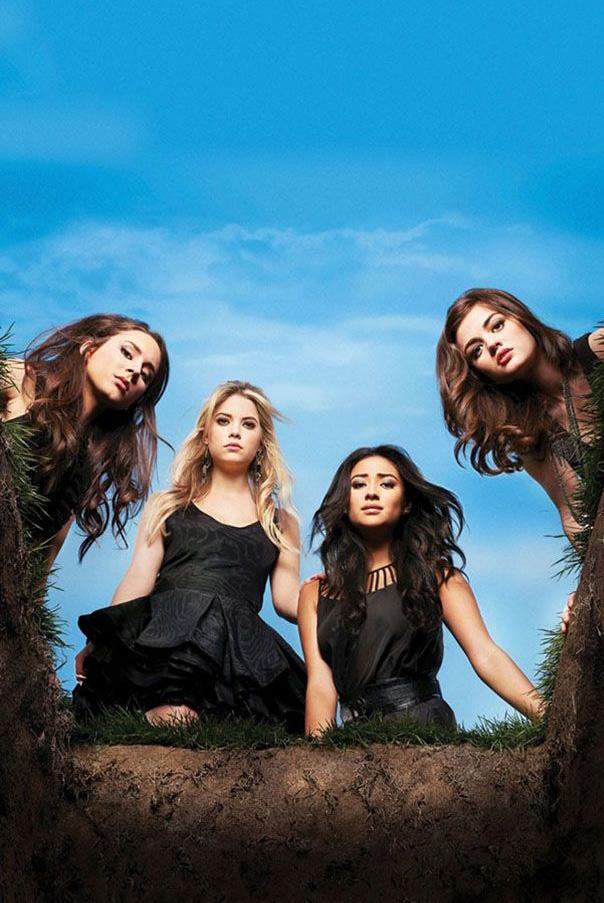
Isaac Rios
(9) “Miraculous: Tales of Ladybug & Cat Noir” is an animated television series that follows two Parisian teenagers who turn into the superheroes. IMDb rating: 7.7/10
“Marinette is my favorite character because she thinks of others’ happiness before her own, so she has a lot of negative emotions bottled up. This one time she helped a girl have a better relationship with her mom by sacrificing and not going to New York even though it was her dream.” Image courtesy of Zagtoon
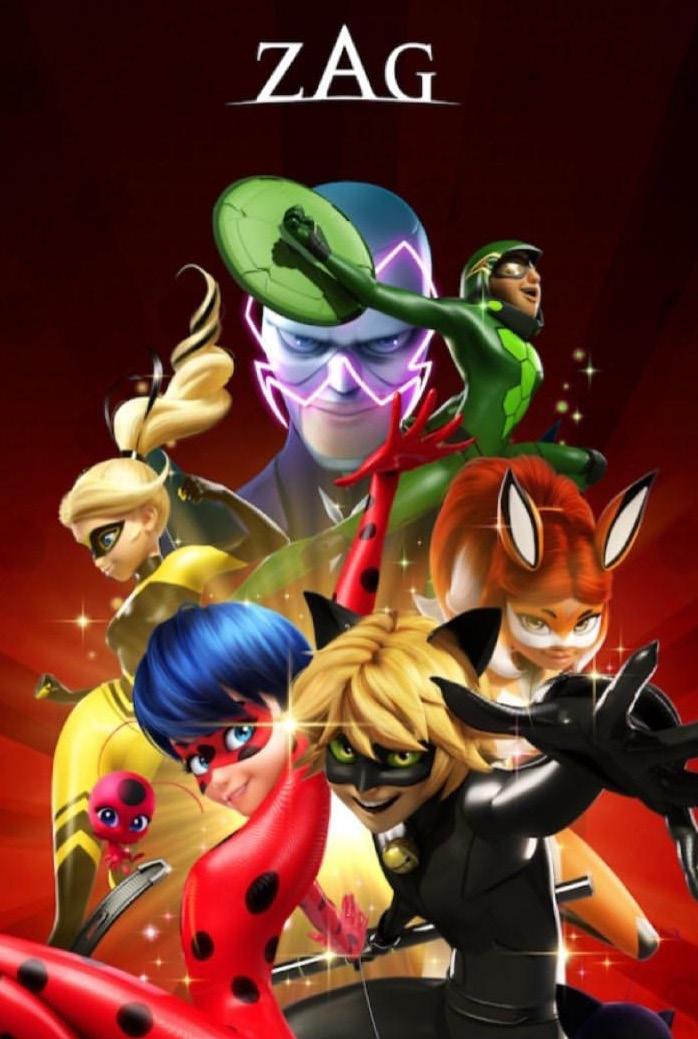
Kedaar Chakankar
(11) “One Punch Man” is an anime series about the superhero Saitama, whose overwhelming strength allows him to defeat enemies in a single punch, making him long for a worthy opponent. IMDb rating: 8.8/10
“I think it’s interesting how he’s basically just really, really, really strong and is essentially bored whenever he fights villains and whatnot. He just has a straight face the whole time.” Image courtesy of Spike ChunSoft Image courtesy of Aaron Warkov/Nickelodeon


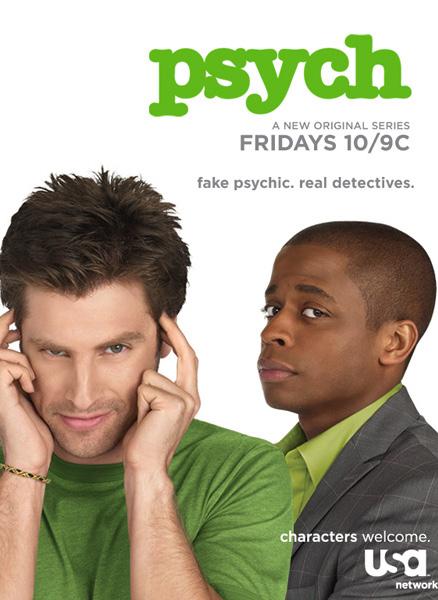
Image courtesy of USA Network
Nhi Do
(8) “Victorious” is a Nickelodeon sitcom that follows Tori Vega and her friends as they navigate high school at Hollywood Arts High School, featuring original songs like “Freak the Freak Out” and “Take a Hint.” IMDb rating: 6.9/10
“I really like the elements of musical, weird drama, physical acting and stuff like that. It’s an arts school, and the characters are very strange, but in a good way— not your normal daily characters.”
Gursimar Rana
(12) “Psych” follows police consultant Shawn Spencer who makes such intense observations to solve crimes that others believe he is psychic. IMDb rating: 8.3/10
“I always had a thing for detective shows or crime shows, like ‘Flash,’ ‘Lucifer,’ ‘Brooklyn NineNine’ and ‘Psych.’ They all revolve around that. And I like a lot of comedy shows; I want to laugh, so ‘Psych’ combines those two together.”

Image courtesy of Lucasfilm Ltd. & Disney+
LJ Cerrato
(7) “The Mandalorian” is a live action series based in the “Star Wars” universe that follows gunfighter Pedro Pascal after the fall of the Galactic Empire as he tries to protect the child Grogu and is pursued by the remaining Imperial forces. IMDb rating: 8.8/10
“For one, I’m obsessed with baby Yoda. And for two, I just like the idea of how everything is not on Earth; it’s in space.”
THRIFT IT
The pros and cons of secondhand shopping
ARTICLE & PHOTO ILLUSTRATION BY THRISHA PRAVEEN • PHOTO COURTESY OF TIFFANY TRAN • DESIGN BY AMANDA REBOREDO
Junior Tiffany Tran brushs her hands along a rack of clothes, keeping an eye out for a vibrantly-colored dress. Suddenly, she find one: an asymmetrical, royal blue and purple glittery tie-dye dress from the brand Guess.
When thrifting with friends during her freshman year, the striking maxi dress caught Tran’s eye. Although her friends commented that the dress was “ugly,” as Tran recalled, she saw its potential and took the $10 dress home. After trimming and hemming it into a short dress, this thrift find became one of Tran’s favorite pieces in her closet.
Tran began thrifting as a freshman while serving as the creative director for an Odyssey of the Mind club. She had $150 to use toward finding costumes for her team’s performance with the theme of “a carnival in space.” Through thrifting, she found white joggers with red stripes for an astronaut costume and a skirt she altered to resemble a UFO with cardboard.
“I was scared to thrift at first,” Tran said. “Growing up, my parents had this superstition that it would bring ‘bad energy’ into the house. I think that’s because in my culture, after someone passes away, we donate their clothes.”
According to a 2018 article published by Time titled “History of Thrift Stores,” thrift store beginnings were waste management systems and pawnshops that appeared during the Industrial Revolution. Clothes became more affordable, so people increasingly thought of clothes as disposable. Initially, there was a stigma connected to buying secondhand clothing and prejudice against the predominantly Jewish sellers. Later, public perception of thrifting became more positive as Christian ministries like Salvation Army and Goodwill entered the market and offered social services. Once called “junk shops,” the name change to “thrift shops” in the 1920s had a better marketing appeal.
Senior Jordyn Roberson mainly thrifts vintage clothing, men’s clothing and larger-sized clothing. Roberson does not prefer the women’s clothing options available at thrift stores.
“[Thrifted clothing] kind of has a different look to it, so you have to be confident in what you’re wearing in order to style it,” she said. “I feel like that outfit will look entirely different if you don’t have confidence in it.”
Junior Kaitlyn Than said thrifting is a cost-effective way to find clothing that is ontrend since fashion is cyclical. An example, according to the Atlantic’s article “How Mom Jeans Became Cool (Again),” are mom jeans— high-waisted and straight-legged jeans that grew popular in the 1980s, which are now sold in stores like H&M and Zara. Than adds that thrifting helps her buy clothing similar to her style inspiration, Emma Chamberlain, an influencer whose thrift store hauls on YouTube have amassed millions of views. Roberson, however, shops online instead for pieces that fit recent trends.
Before the pandemic, Tran thrifted every few weeks to add more unique clothing to her wardrobe, feeling a sense of competition as she thrifts since she knows other teens are also on the lookout for accent pieces.
“It does fuel my individuality complex a little bit because sometimes I find a piece of clothing and I’m like, ‘Oh, my friends probably don’t even have this because it’s probably one of a kind,’” Tran said.
James Maldonado, the store manager of HopeThrift, said new items enter the store every 15 to 30 minutes, and a shopper coming in at different times will find different items. Than added that based on her observations from thrifting once a week, the selection at thrift stores changes every visit, so the clothes can be a hit or miss depending on a shopper’s taste.
“I feel like it’s much more personalized to yourself because you’re looking through all these [clothes] not just suited toward you, but a variety [of styles], so you can experiment more,” Tran said.
Roberson appreciates that thrifting allows for wearing a range of styles while supporting
local businesses and a worthy cause since thrift stores are commonly known to donate their profits.
Purchases from HopeThrift, located two blocks from UPA, fund HopeServices, which provides “employment opportunities and resources for people with developmental disabilities and in-need Bay Area residents with vital resources,” according to its website. Maldonado said HopeServices supports 3,800 individuals and families in the community, noting the organization raised $201,922 for a family with quadruplets through their holiday campaign last year.
“I know for a lot of bigger corporations [the profits are] just straight going to those [in charge] and not really toward the people who are making the clothes,” Roberson said, “so I appreciate profits that are taken back to the people.”
In terms of thrifting to resell on secondhand fashion apps, like Depop, profits are taken by the sellers who, both Tran and Roberson noted, hike up prices on items that would originally be sold at a much lower cost. Maldonado has seen people come to HopeThrift and buy all the newest jackets to resell them online. He acknowledges this is beneficial for the store since it makes a sale from the purchase. However, he has also seen situations when a family comes in, but there are no more jackets for them because they’re all depleted.
Reselling apps have triggered a growing discussion on the ethics of thrifting. According to a 2019 Berkeley Economic Review article titled “Rise of Thrifting: Solution to Fast Fashion or Stealing from the Poor?” growing concern over climate change and an emphasis on ethical consumption has led to the rise of thrifting in Gen Z and Millennials since brands that do fit these sustainable expectations, like Reformation and Everlane, are more pricey.
According to the article “How fast fashion hurts the planet through pollution and waste” published by Business Insider in 2019, “the fashion industry is responsible for 10% of humanity’s carbon emissions, [which is] more emissions than all international flights and maritime shipping combined.”
“Well, reduce, reuse, recycle—that’s a conversation that wasn’t happening as much, when, for example, I was in high school, so that’s a more modern social conversation for which I’m grateful,” English teacher Claire Ballard said.
She prefers buying secondhand, especially for home goods, to be more environmentally conscious and to save money.
“I think that now people are more willing to consider recycling than they were before,” Ballard said. “But I think that often adults are looking maybe for a better deal more than anything else, and a good beneficial byproduct of shopping secondhand would, of course, be being more environmentally friendly.”
Tran believes that due to the surplus of clothes at thrift stores, everyone, no matter their circumstances, should take advantage of the opportunity.
“I don’t think you need to shame people for trying to be environmentally friendly,” Tran said. “And I think that this should be open to everybody, not just poor people or [people] on the heavier side.”
Due to current fashion trends, another issue related to thrifting is buying clothes that are multiple sizes larger than the shoppers’ sizes. According to a blog post from 2019 on Dina’s Days titled “The Problem with Thrift Stores and Plus-Size Clothing,” plus-size clothing is rare in the new clothing market due to retailers’ and designers’ refusals to make plus-size clothing. Therefore, thrift stores fall prey to the lack of size inclusivity at the top of the clothing chain.
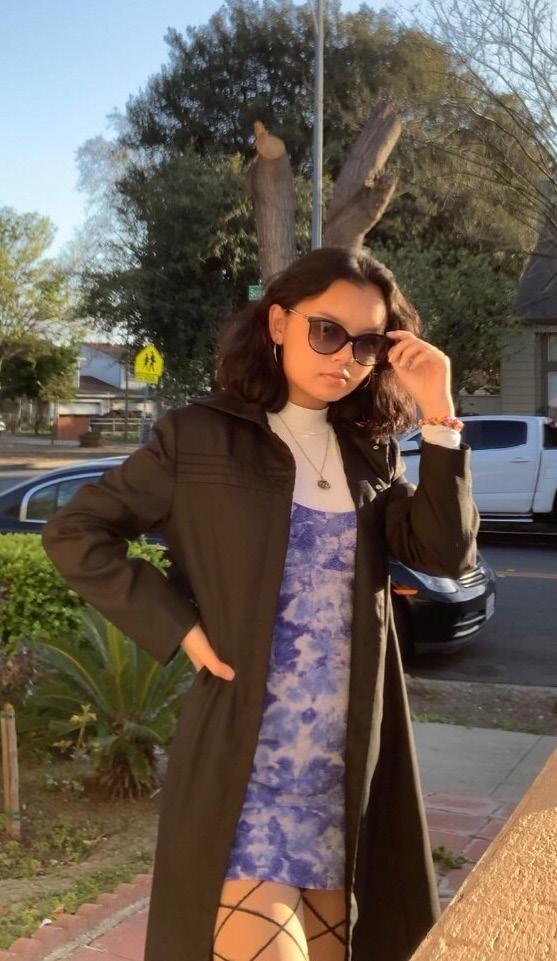
Tiffany Tran (11) poses in her thrifted blue dress, which she bought from HopeThrift.
Tran has seen TikTok videos discouraging thrift store shoppers from buying clothes that are multiple sizes larger than the shoppers’ size to avoid taking away options for plus-size thrift shoppers, but she noticed there have not been plus-sized people, those who would be affected, speaking out—only slim people.
“I have seen the younger people purchasing and wearing oversized outfits, but nothing dramatic,” Maldonado said. “They’re actually buying what’s available. [If] someone is a small [in clothing size] and they’re buying medium, that’s still within the level of product that we have a lot of, even from large to extra-large. The place where we will have less is with the 2X, 3X and 4X, but at this time, I haven’t seen a lot of that sizing going out other than the normal purchases.”
Critics online say the growing popularity of thrifting has increased the prices of goods at thrift stores, negatively impacting those who rely on thrifting for cost-efficient clothing. HopeThrift’s usual policy for pricing the item depends on how new it is, the quality and the brand. However, during the pandemic, HopeThrift has lowered the starting price for each of the tiers they have that are based on the quality of the item.
“Instead of pricing everything the same, we take it item by item, but we also think about how this year is impacting people,” Maldonado said. “Every dollar for a lot of people needs to go further than it did a year ago. We understand that, and we try to demonstrate that in our pricing.”
Over the five years Roberson has been thrifting, she has become more aware of her thrifting habits.
“I think overall thrifting is OK, but you just have to be conscious of how often you’re doing it and what products you’re getting,” she said. “If you’re taking away from someone that actually needs it, then maybe you shouldn’t be doing that.”
Tran has noticed that compared to when she first started thrifting, she is now more open to purchasing “crazy” thrifted clothing, as well as altering pieces to her liking, something she feels too scared to do with retail clothing.
“[Thrifting] just makes me feel very prideful in my closet,” Tran said. “I guess because it’s my own. I picked it out myself. It might have a history behind it. It’s not just made in some factory by some children and then just thrown into Forever 21.”
SPIRITED AWA FROM ETHNIC UNIFORMITY Y
Anime audiences call for increased diversity in the Japanese animation medium
ARTICLE BY AMANDA REBOREDO • DESIGN BY ALEXANDRA ROZMARIN
As anime has risen to prominence on the international white character they receive a lot of racism,” Michael said. stage, global fans have started calling for a greater de- Sophomore Emma Tran, who has been a fan of anime since piction of diversity in the Japanese animation medium. around fifth or sixth grade, thinks the question of whether to add
Anime, a form of animated Japanese media, origi- more ethnic diversity depends on how the anime is written. nated back in 1917 with artists Ōten Shimokawa, Jun’ichi Kōuchi “I do like animes that are ethnically diverse, but [only] if they’re and Seitaro Kitayama, who are known as the pioneers of Japanese done properly,” Tran said. “They can take stereotypes, like super animation. Cartoons made on chalkboards or paper eventually de- bad stereotypes, and that’s not very good.” veloped into government propaganda due to the surge of Japanese She knows two characters from “The Disastrous Life of Saiki nationalism during WWII. The effects of the war, more specifical- K,” Takahashi and Mikoto, as being heavily stereotyped as carily the bombings in Hiroshima and Nagasaki, became evident in catures of a Black person, with Takahashi being “stupid” with big post-war animation, with films depicting atomic bombings. lips and a big nose and Mikoto being overly sexualized.
According to “A Nerdy “I feel like they would History Lesson: The Early have to actually get in Days of Anime in Amer- touch with the people who ica,” it was not until the are actually part of those 1960s when anime would ethnic groups instead of become known to the West just going off stereotypes with the film adaptation of and what they think is cor“Astro Boy,” which was a rect,” Tran said. Japanese comic—called Michael mentioned a manga—written and illus- lack of representation with trated by Osamu Tezuka. Hispanic characters in an-
The topic of ethnic imes. representation has been “[Hispanic people are] brought up more recently I think, the least seen,” by fans, who started online Michael said. “I can only discussions questioning Image © 2001 Studio Ghibli - NDDTM think of one character why there are so few eth- This still from “Spirited Away” depicts the film’s main character, who is in all of the animes nicities represented. Eth- 10-year-old Chihiro, with Haku, a river spirit named “Spirit of the I’ve seen, and that’s Luffy nicity demographics in Ja- Kohaku River” in the English-dubbed version, demonstrating Benson [from the anime “One pan show that as of 2016, Doan’s reference to species diversity in Isekai animes. Piece”]. And I don’t think 98.1% residents were Jap- that counts because he was anese. The other 1.9% consists of mostly other Asian ethnicities. Brazilian. So that’s actually not Hispanic, that’s [Latino.]”
Certain students at UPA see benefits in increasing ethnic diver- Tran noted she has never seen a Filipino or Vietnamese characsity in animes, such as increased representation and denormalizing ter in anime. racism against other ethnic groups. “It would be more beneficial because having a broader range of
Seventh grade student Benson Doan, who has watched anime diversities would attract more people to watch the animes,” Tran since third grade, is one of these students. said.
“[Ethnic diversity is] a really good thing, but it’s still not used “Hetalia: Axis Powers,” Michael said, is an anime series that much,” Doan said. “But in terms of diversity, people mostly refer has taken a step in the direction of representation. to Isekai animes because there’s different species and everything.” The show takes place around World War II and satirizes histor-
Isekai animes are a subgenre of anime in which the main pro- ical and political events during the time period. The show consists tagonist gets transported into a new reality, with notable examples of characters from the Axis and Allied Powers, such as Germany, being “Spirited Away” and “Sword Art Online.” Japan, the United States, France, Russia, China and Canada.
Junior Blain Michael has been a fan of anime since fifth grade “Each and every country was personified as a person, and they and believes that including a wider range of ethnic groups in an- were all based on the artist’s interactions with these kinds of peoimes would curb racism within the anime community. ple,” Michael said. “He used to move around a lot and he met a lot
“Those who cosplay, like African Americans or Indian people of different types of people, and they’re all from his experiences.” or people who basically aren’t white, when they do cosplays of a
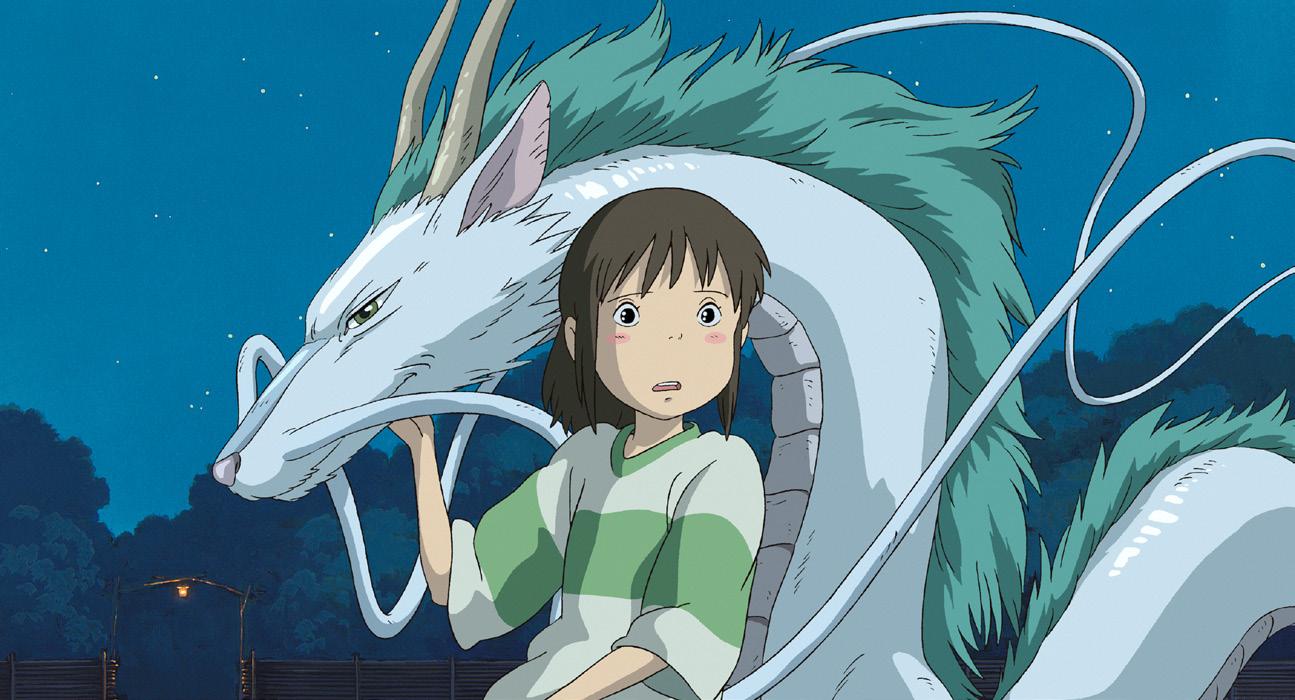
SWEETS IN THE CITY
REPORTING, PHOTOS, ILLUSTRATIONS & DESIGN BY CHELSEA NGUYEN
The most eye-catching desserts are aesthetically pleasing with unique spins on classics, making you want to post a photo of it on your Instagram story or feed. Here is a guide to three tasty and photo-worthy treat stops in San Jose to satisfy your sweet tooth. Le Crème Cafe (3005 Silver Creek Road #134)
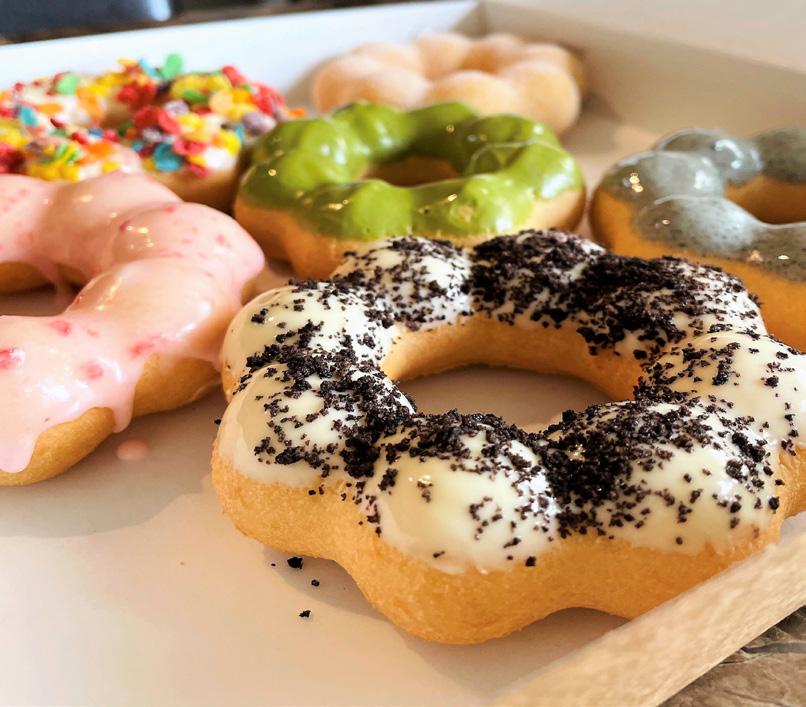
Located in Silver Creek Plaza near Vietnamese restaurants and milk tea stores, Le Crème Cafe shines among the other businesses thanks to their Japanese-inspired glazed mochi donuts. Le Crème Cafe’s mochi donuts consist of eight donut holes connected in a circle that have a lighter and chewier consistency than regular donuts, as they are made with glutinous rice flour instead of wheat flour. The chewy texture resembles a fried sesame ball, which can bring back memories of eating fried sesame balls on Lunar New Year. Glazed donuts are too heavy for some tastes because the donuts are thicker and the glaze can be too sugary, but Le Crème Cafe’s donut glazes do not overpower the mochi donuts. Le Crème Cafe dips its mochi donuts in a sugary glaze with flavors that include matcha, black sesame, cookies and creme, strawberry and fruity pebbles. If you are craving donuts and want to experiment with new flavors and textures, visit Le Crème Cafe on your next donut run.
Caffe Bene (181 E Tasman Drive #80)
This dessert and coffee shop will take customers traveling through Europe and Japan with its pastries. The shop has a cozy atmosphere because of the dangling lights, bookshelves and wooden chairs and tables. Caffe Bene has a wide selection of desserts, from macarons and Japanese souffle cheesecakes to multi-layered cake slices and Belgian Liege waffles with whipped cream and fruit. Spaciously placed tables with yellow umbrellas are set up outside the shop, where patrons can meet and catch up with each other while enjoying their pastries and drinks. The desserts are best paired with their milk teas or iced lattes. The Tokyo Roll, a Japanese vanilla souffle sponge roll cake with whipped cream and vanilla custard in the center, is a must-try paired with an iced classic milk tea. A quick trip to Caffe Bene is best during a sunny afternoon or at night when the dangling lights illuminate the space.


Cauldron Ice Cream (1088 E Brokaw Road #60)
When it comes to the most aesthetic ice cream, no other ice cream shop beats Cauldron Ice Cream. The shop is best known for its handmade rose-shaped ice cream wrapped in a bubble egg waffle. Cauldron has classic ice cream flavors like vanilla and strawberry, but its most popular treats are tea-flavored and floral-based ice creams. One example is Sun, Moon and Stars, which is an oolong, jasmine and green tea ice cream topped with white star-shaped sprinkles. The bubble waffle is freshly made after ordering, so it comes out still hot once the dessert is ready. Immediately after receiving an order of Sun, Moon and Stars with an original-flavored bubble waffle, the ice cream will start to melt, so take out your phone quickly in order to capture the aesthetic dessert in front of Cauldron’s famous neon pink sign. Cauldron’s ice cream has a thick consistency and tastes creamier than expected since the creaminess of the Sun, Moon and Stars ice cream overpowers the tea flavor. Tearing off a part of the bubble waffle and dipping it into the ice cream is a recommended tip since the taste will resemble that of an ice cream sandwich.
Top: A cookies and cream mochi donut from Le Crème Cafe. Above: Class of 2020 alumnae Arielle Rose-Finn and Betty Nguyen catch up about college at Caffe Bene. Left: Sun, Moon and Stars ice cream with bubble waffle from Cauldron Ice Cream. Arts & culture | 30




